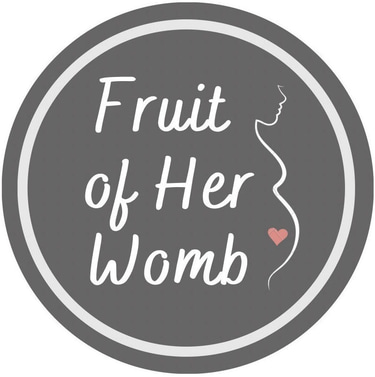Empowering Catholic Couples Through NFP
You have come to the right place if you are a Catholic who is married or engaged and you want to learn about Natural Family Planning (NFP), and how it can strengthen your marriage through understanding the woman's cycle and God's design for love and procreation.
What is Natural Family Planning?
NFP is a term for natural and moral methods of family planning that involves understanding the intricacies of the woman’s menstrual cycle. Scientific discoveries in biology have allowed for fertile and infertile phases of the cycle to be determined with incredibly high accuracy. Married couples can study and use this knowledge to work together with God in the process of achieving or postponing pregnancy.
NFP does not go against God’s laws, because NFP does not involve the woman rejecting her gift of fertility with hormonal birth control, barrier methods, or surgical interventions.



Why should Catholics practice NFP?
Strengthen the conjugal love within your marriage covenant, and deepen your connection with God and each other.
Understanding the Philosophy of NFP
"Marriage covenant" refers to the relationship between the husband and wife, a permanent union of persons capable of knowing and loving each other and God.
God’s design for the conjugal act is that it should be unitive and procreative.
Catholics living out the vocation of marriage are called to always be open to new life.
Catholic Marriage
Responsible Parenting
Couples can practice responsible parenting by planning the spacing of children if they have "well-grounded reasons".
Research suggests waiting 18 to 24 months between pregnancies to reduce the risk of pregnancy complications and other health problems.
Children conceived 24 to 59 months after a previous birth have the lowest risk of dying in infancy.
Fertility
NFP allows a woman to track her cycle to understand when she is most fertile and also infertile.
Married couples can use this knowledge to accept fertility as a gift and live with it.
True practice of NFP would require the couple to abstain from the conjugal act during times of fertility if they would like to postpone a pregnancy. Thus, both the husband and wife learn true mastery of their sexual desires.
Methods of NFP
There are a few basic methods of NFP, and some also have different names and adaptations. The goal of each one is to utilize biological indicators of fertility produced by the female body.
Basal Body Temperature Method
This method involves a woman taking her temperature when she wakes up every morning and charting it to see when the temperature rise occurs, thus signaling ovulation. Knowing when ovulation occurs might help to know when to attempt to conceive a child, but this method alone does not have rules to figure out when the fertile phase begins (if the couple is trying not to conceive).
This method involves the woman keeping a daily record of her own cervical mucus characteristics. A woman practicing these methods will learn to recognize the different types of cervical mucus that her body produces in response to estrogen, which in turn will signal if she is in the beginning, peak, or end of the fertile phase of her cycle.
Cervical Mucous Methods
Hormonal Monitoring Methods
Sympto-Thermal Methods
Lactation Amenorrhea Method
This method involves checking both basal body temperature and cervical mucus, while charting the woman’s cycle and following a formula with rules to know if she is in the beginning, peak, or end of the fertile phase.
This method incorporates the use of a fertility monitor and involves the checking of hormone levels by testing the woman’s body fluids, such as urine. These monitors are capable of testing for the levels of key fertility hormones in the urine, which then gives the woman pertinent data to determine if she is in the fertile phase.
This method of postponing pregnancy applies to women in their first 6 months of postpartum (meaning, after giving birth).
Criteria:
• Woman is fully breastfeeding; baby is at the breast every 3 – 4 hours during the day, and no more than 6 hours between feeds at night.
• No return of menses
• Woman is <6 months postpartum.
(If all 3 criteria are met, 1-2 % of women will get pregnant.)
Biological indicators of fertility:
temperature shift
mucus characteristics (stretchy)
cervical changes
breast tenderness
Biological indicator of fertility:
temperature shift
Biological indicators of fertility:
mucus characteristics
Specific names of methods:
Billings Ovulation Method
Creighton Model
Specific name of method:
Biological indicators of fertility:
estrogen
luteinizing hormone
progesterone
If you would like to learn Marquette Model of NFP, I am available as a student teacher to instruct couples on this method. Register now to get a discount on the course!
To learn more, CLICK HERE!
Clarissa Gonzales
Empowering mothers through birth and postpartum.
Follow me on Facebook and Instagram!
Contact INFO
Inquire now
clarissa@fruitofherwomb.com
© 2024. All rights reserved.
Leave a review on Google or LinkedIn!
